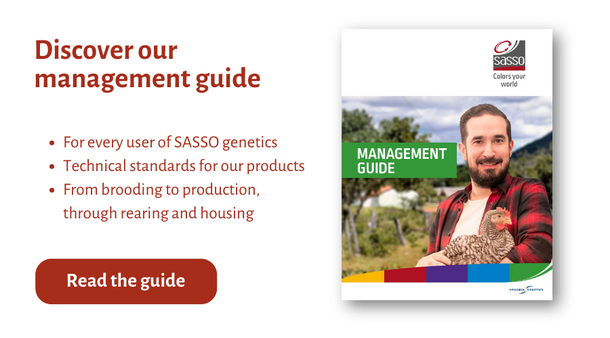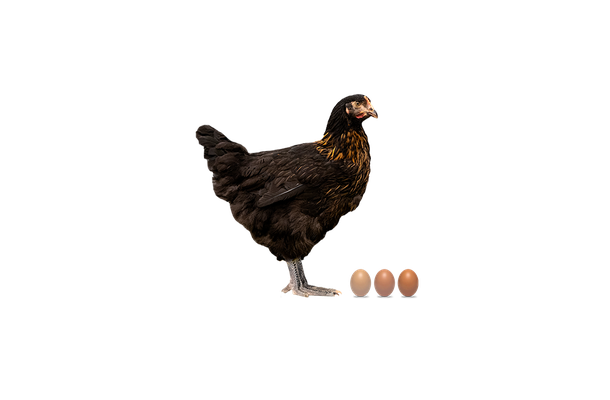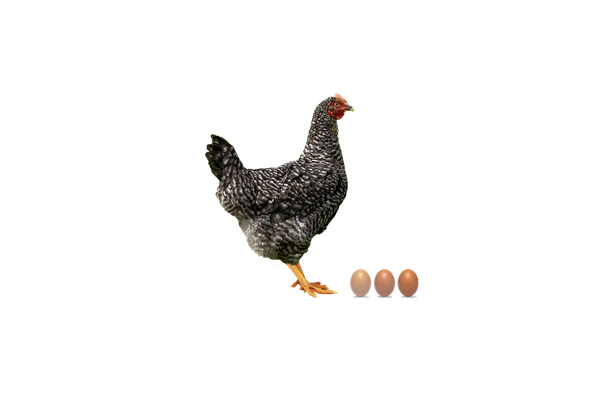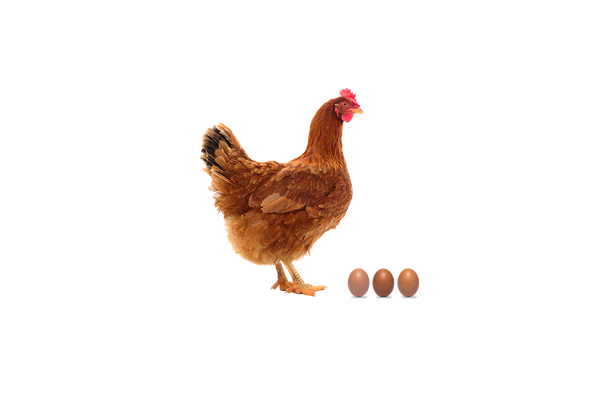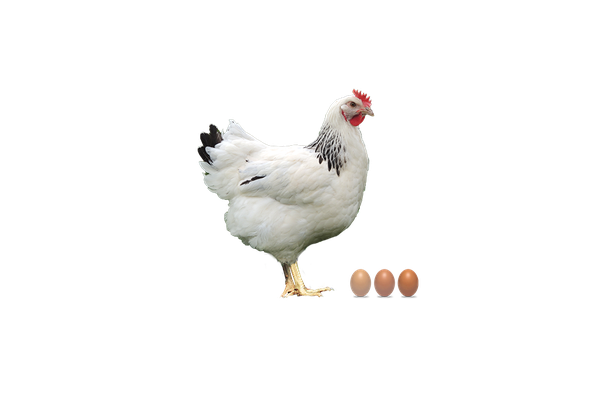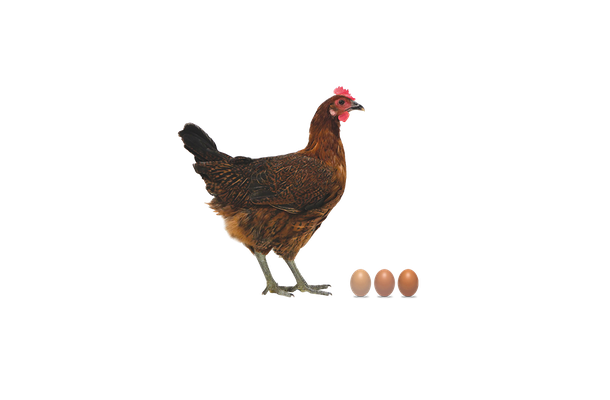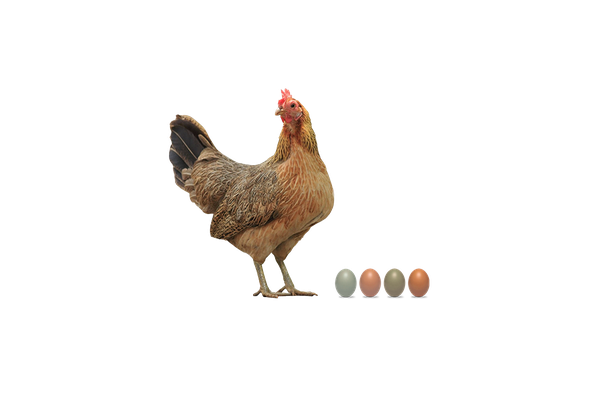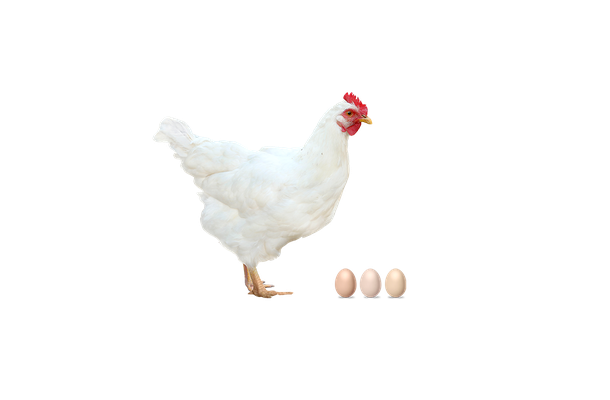Silver
This silver-feathered bird is a well-balanced performer for either egg or meat production. The SASSO Silver is the heaviest of our portfolio of colored layers as you can expect a body weight of 2950 g at 75 weeks. It lays a high number of beautiful brown eggs and delivers excellent carcass yield after slaughter. This traditional layer is also notable for its beautiful, ash grey feathering, which makes her particularly appreciated by the domestic or backyard chicken market. Its flexibility and unique characteristics offer great value for you and your operations. You can easily feather sex with the Silver as it produces feather sexable day-old chicks. The Silver layer is able to thrive in different production environments with minimal management.
Laying period data:
- Egg production (cumulative) at 75 weeks: 298
- Body weight at 5% production: 2140 g
- Body weight at 75 weeks: 2950 g
- Average feed intake from 20 to 75 weeks: 48.3 kg
- Produced egg mass: 17.88 kg
- Average feed per egg: 162 g
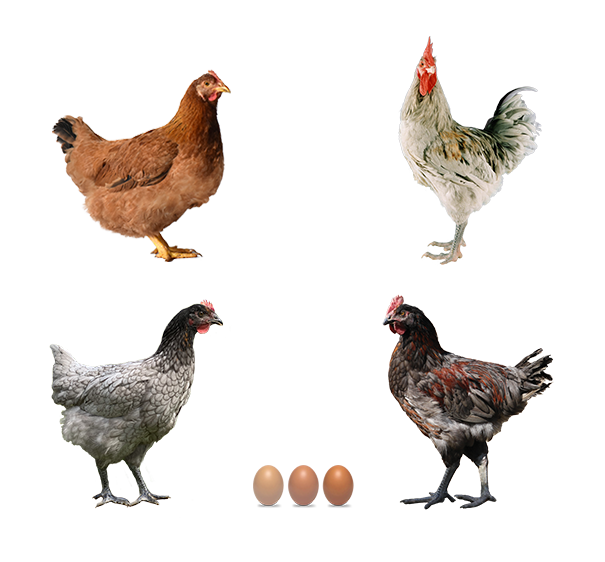
Unique benefits
Heavy laying hen
The Silver layer is the heaviest of our portfolio of colored layers.
Great transformation results
The SASSO Silver is a dual purpose layer and provides excellent carcass yield.
Perfect for traditional farming
This beautiful grey chicken thrives on the domestic and backyard market.
Male growing performance
| Age in days | Male body weight (g) | FCR |
|---|---|---|
| 1 | ||
| 7 | ||
| 14 | ||
| 21 | 316 | 1.38 |
| 28 | 463 | 1.56 |
| 35 | 665 | 1.72 |
| 42 | 901 | 1.86 |
| 49 | 1151 | 1.97 |
| 56 | 1418 | 2.11 |
| 63 | 1689 | 2.25 |
| 70 | 1956 | 2.44 |
| 77 | 2204 | 2.66 |
| 84 | 2430 | 2.9 |
Laying performance
|
Age in weeks |
Body weight theo. (g) |
Weekly laying theo. (%) | Cumulative egg production theo. |
Egg weight theo. (g) |
Feed consumption theo. (g) |
|---|---|---|---|---|---|
| 21 | 2150 | 32 | 3 | 46 | 100 |
| 27 | 2350 | 91 | 38 | 53 | 125 |
| 40 | 2595 | 86 | 118 | 60 | 125 |
| 50 | 2745 | 82 | 177 | 62 | 125 |
| 60 | 2845 | 77 | 232 | 63 | 125 |
| 75 | 2950 | 67 | 298 | 63 | 125 |
These recommendations, based on our experience, are intended to allow the expression of our strains’ genetic potential in normal operations without any responsibility on the part of SASSO. An environment, biosecurity conditions, the geographical location, or specific equipment might require adaptations that have not been taken in consideration in these general recommendations.

